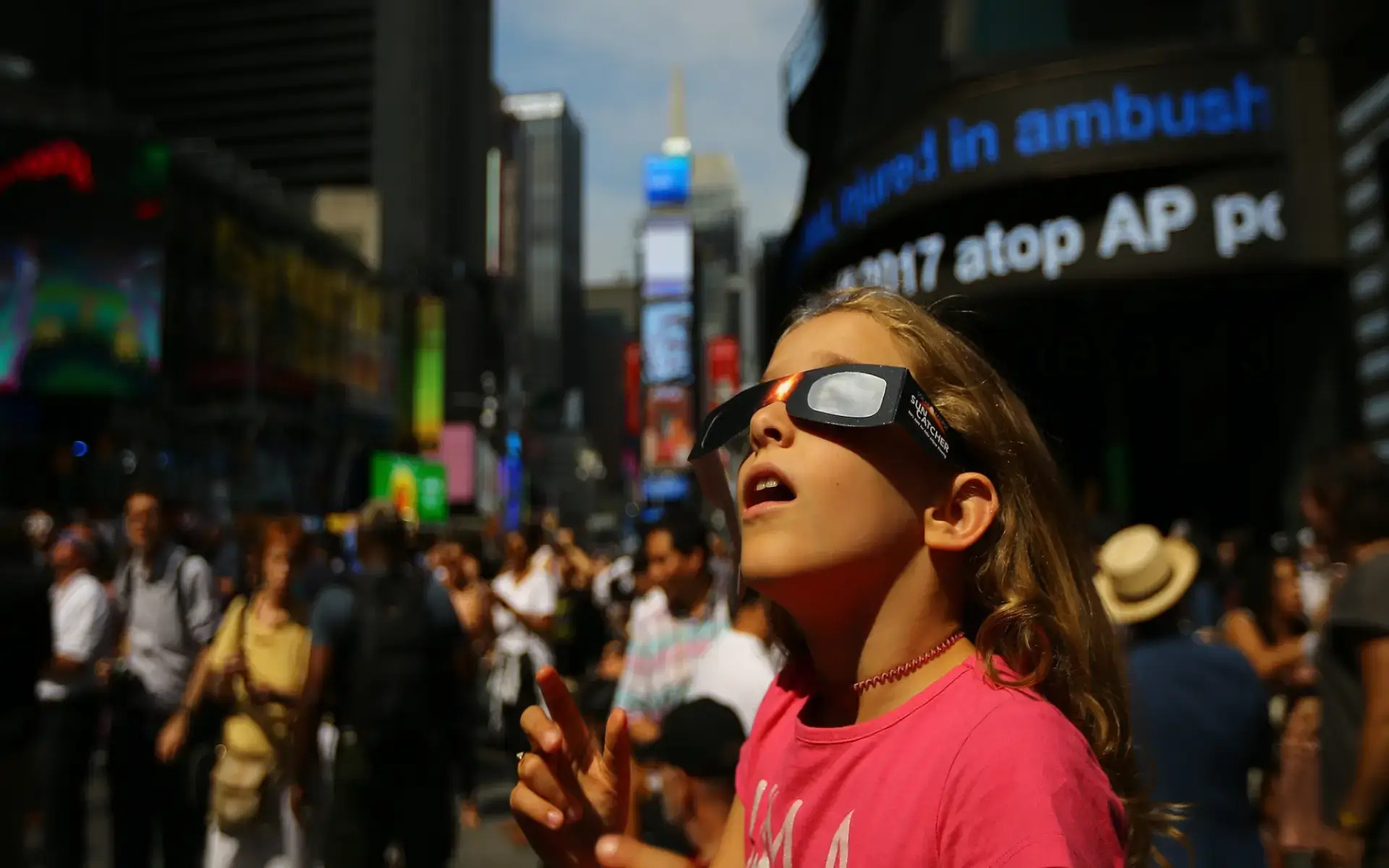When it comes to celestial events, there’s nothing quite as mesmerizing as a solar eclipse. However, viewing this natural spectacle requires certain precautions, especially in places like New York City where the path of totality doesn’t pass directly.
A solar eclipse occurs when the moon aligns itself between the Earth and the sun, blocking the sun’s light and casting a shadow on our planet. This celestial spectacle is a rare occurrence, making it a highly anticipated event for both astronomy enthusiasts and casual observers.
The path of totality refers to the narrow strip where observers can witness a total solar eclipse. Unfortunately, New York City doesn’t fall within this path for the upcoming event. Cities like Buffalo, Rochester, Syracuse, Lake Placid, and Plattsburgh in New York State will have the privilege of seeing the sun completely obscured by the moon.
Despite not being in the path of totality, NYC residents will still be able to enjoy a significant partial eclipse. The moon is expected to cover about 89% of the sun during the peak of the event. The eclipse will start at around 2:10 PM and end at 4:36 PM, with the peak darkness lasting an impressive four minutes.
Even though only a small portion of the sun will be visible in NYC, it’s crucial to remember one rule: Never look directly at the sun. The intense sunlight can damage our eyes within seconds, leading to temporary or even permanent vision loss.
READ ALSO: The Spectacular Solar Eclipse Experience in Texas Hill Country
Looking at a solar eclipse without proper protection can lead to serious eye injuries. In fact, after every eclipse, optometrists often report an increase in patients complaining of vision issues such as blind spots, flashes, or distortion. Therefore, it’s imperative to use the correct viewing methods and equipment to safely enjoy this astronomical event.
Regular sunglasses are not suitable for viewing a solar eclipse. Instead, experts recommend using special protective glasses designed specifically for this purpose. These glasses filter out the harmful rays of the sun, allowing you to safely observe the eclipse.
As the solar eclipse nears, many retailers will begin selling these protective glasses. You can also find them online on trusted platforms like Amazon. It’s important to purchase from reliable sources to ensure the glasses meet safety standards.
For those on a budget, several organizations in NYC will be distributing free eclipse glasses. The New York Public Library, for instance, will hand out glasses on a first-come, first-served basis. Other places offering free glasses include the Moynihan Train Hall, Long Island Welcome Center, and select service areas on the New York State Thruway.
If you’re feeling crafty, you can make your own safe solar viewer using cardboard, white paper, and aluminum foil. NASA has a handy guide on how to do this. Alternatively, you can use a colander or spaghetti strainer to project multiple images of the eclipse on the ground.
NASA has provided several guidelines to ensure safe viewing of the solar eclipse. Remember to always wear your eclipse glasses during the partial eclipse phases. You can only remove them during totality, when the moon completely obscures the sun. As soon as you see a hint of sunlight reappearing, put your glasses back on.
